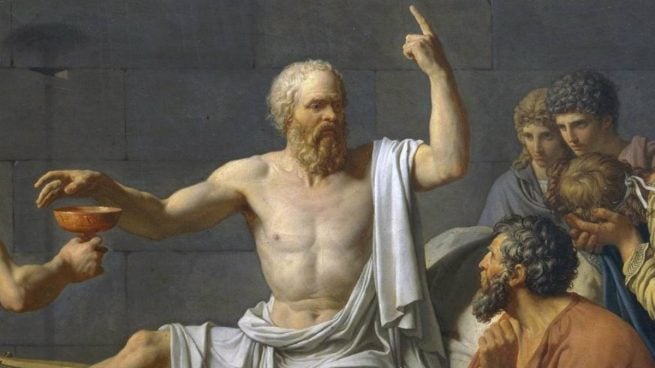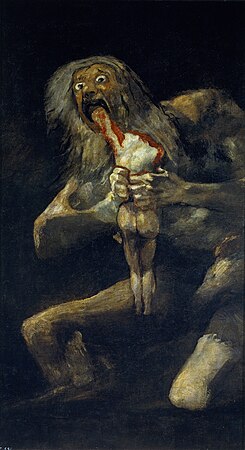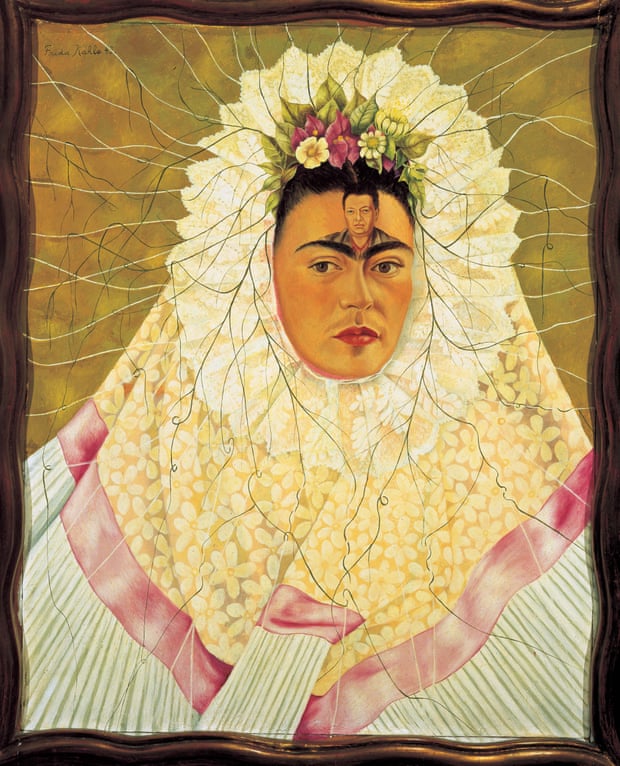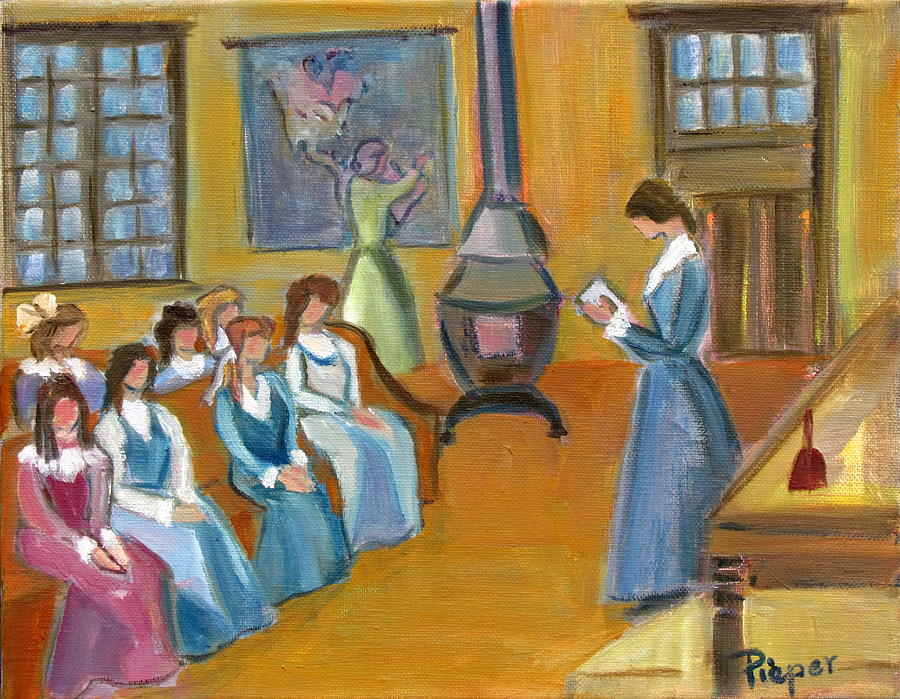Eloquium is a language school based on Aguascalientes.We aim towards providing the best educational services in the city.
lunes, 29 de mayo de 2017
Estrategias de lectura previa
La lectura previa, cuando se hace de forma estratégica, es una exploración del texto para conocer su estructura, tener una idea del contenido y tomar una decisión para profundizar en la lectura (Sánchez, 2009).
Veamos tres estrategias.
Explorar el texto antes de leer
Explorar el texto que vamos a leer nos permite activar conocimientos previos y tomar decisiones. Por ejemplo: podemos ver el número de páginas, las ilustraciones, los índices y los párrafos introductorios de cada capítulo.
En esta exploración es muy útil leer los títulos y subtítulos, y entender cómo están organizados; esto último nos da una idea de la estructura general de la obra y nos da una idea de las intenciones comunicativas del autor. Esta exploración también sirve para afinar nuestros propósitos de lectura y organizarnos mejor; por ejemplo, tal vez hallemos que el texto es amplio, lo que nos ayudará a detallar nuestro horario de estudio; o quizá resulte que sólo nos servirán ciertas partes del texto, y necesitaremos buscar otras fuentes.
Usar el conocimiento previo
Todo lo que leemos cobra sentido para nosotros si lo relacionamos con lo que ya sabemos. Por eso, mientras más conocimientos previos estén activos al leer, más profunda será nuestra comprensión de lo leído.
Cuando exploramos un texto de manera estratégica y con propósito, esos conocimientos se activan en nuestro cerebro, que de ese modo está preparado para que las ideas que leeremos sean más claras.
Elaborar predicciones
Explorar los textos nos permite adelantar un poco e imaginar de qué se trata el tema y cómo lo expondrá el autor. Esto nos da una guía mientras leemos de manera más detenida. Claro que a veces nuestras predicciones serán equivocadas, pero lo importante es que estamos usando nuestro conocimiento previo y leyendo activamente.
Recomendaciones para realizar la lectura previa
He aquí algunas sugerencias para realizar la lectura previa. Recuerda que en algunos textos aplican algunas
sugerencias y en otros no. De hecho, el que un texto tenga o no estos elementos nos da cierta información
que puede ser útil.
• Revisar la portada y contraportada para conocer el nombre del autor, el título, subtítulo, editorial y año
de publicación.
• Leer la introducción, el prólogo o el prefacio, pues ahí están los motivos por los cuales el autor escribió
la obra.
• Revisar el índice, ya que es la presentación de los capítulos y partes que conforman la obra.
• Entender la distribución del texto, con los epígrafes, las entradas, los bloques, los párrafos, las líneas y
el interlineado.
• Revisar las notas que pueden aparecer en los márgenes o pie de página.
• Consultar la bibliografía, que es un listado de obras usadas por el autor para construir la obra.
• Revisar la tipografía, o sea, el tipo y forma de la letra.
• Complementos como ilustraciones, diagramas, esquemas y cuadros sinópticos.
También vale la pena repetir la lectura previa en cada etapa de lectura. Es decir, tal vez hicimos una lectura
previa de un libro, y ahora estamos por empezar un capítulo; es recomendable entonces repetir la lectura
previa, pero ahora con ese capítulo en específico.
Planeando la lectura
Planear la lectura es una estrategia previa. ¿Para qué voy a leer?
Los objetivos de la lectura. Los objetivos que pueden plantearse los lectores frente a un texto pueden ser
muy variados:
- Leer para obtener una información precisa. Leemos para localizar algún dato que nos interesa: la fecha
de nacimiento de un autor, un número de teléfono, etc. Una mezcla de “barrido” a través de la información y
minuciosidad cuando se encuentra aquella que interesa. La autora recomienda los periódicos para realizar
este tipo de actividad.
- Leer para seguir instrucciones. Hay que leerlo todo y además comprenderlo. Cuando lo que se quiere
hacer es colectivo, la comprensión debe ser compartida. La metacomprensión se facilita porque el alumno
(a) se ve obligado (a) a controlar su propia comprensión.
- Leer para obtener una información de carácter general. Interesa saber de qué va un texto. Es una lec-
tura muy libre en la que no estamos presionados por una búsqueda concreta. Es lo que hacemos con las
noticias y otros textos periodísticos. Vamos decidiendo si leer sólo el titular y, en función del interés, seguir
con la entradilla, seleccionar párrafos, frases, etc. Solé sostiene que este tipo de lectura es muy útil para
fomentar la “lectura crítica”, ya que “el lector lee según sus propios intereses y propósitos formándose una
impresión del texto y sabe tanto lo que tiene que leer en relación a ellos como lo que puede obviar”. (82)
- Lectura para aprender. Lectura lenta y repetida en la que el lector se interroga permanentemente sobre
lo que lee, establece relaciones, revisa términos nuevos, realiza recapitulaciones, redacta resúmenes o es-
quemas, toma notas, etc. Es esencial que el alumno conozca con precisión los objetivos que se quiere que
consiga.
- Lectura para revisar un escrito propio. La lectura adopta un papel de control, de autorregulación. El
lector va de sí mismo a la imagen que se hace de otra persona que lee lo que él ha escrito. Muchos tex-
tos escolares revelan que no ayudó al escritor a ponerse en el papel de sus lectores. De ahí, dirían Anna
Camps y otros, la importancia de sesiones de escritura comunicativamente contextualizadas en las que
los lectores puedan ser reales.
- Leer por placer. El lector es libre. Repite pasajes o se salta otros. Es fundamental practicar esta opción
para motivar hacia la lectura. Se me ocurre que no tiene sentido que programemos libros para los diferentes
cursos en función del placer o interés de los alumnos y luego les sometamos a aburridísimas fichas de lectura
o “controles” triviales, sin más justificación que asegurarnos que la persona ha leído el libro. Habría que aña-
dir que la literatura no es la única vía para disfrutar con la lectura. Como dice la autora: “...algunas personas
disfrutan enormemente cuando encuentran un texto científico que les hace pensar”. (87).
- Leer para comunicar un texto a un auditorio o para practicar la lectura en voz alta. Si no se prepara
para “evaluar” el nivel de lectura, sino para trabajar en competencias ligadas a la oralización del texto, es
fundamental dar tiempo a la persona para que prepare en silencio la lectura.” No se puede esperar que la
atención de los alumnos (...) pueda distribuirse por igual entre la construcción del significado y la necesidad de
oralizar bien”. (85) Algunos autores señalan que no tiene sentido que los demás tengan delante el texto que se
les lee, sin embargo, si la lectura es expresiva y personal, recrea el texto y permite mucho más su interioriza-
ción por parte de los demás. Tener el texto delante ayuda a fijar una atención mecánica que es perfectamente
compatible con una atención comprensiva mucho más profunda.
- Leer para dar cuenta de que se ha comprendido. Es para lo que más se utiliza la lectura en las aulas. For-
ma parte de un protocolo bastante generalizado en países de nuestro entorno. Según algunas investigaciones
no está claro que la mayoría de preguntas al uso, favorezcan la comprensión de lo leído. Es posible responder
estas preguntas –muchas de ellas además son periféricas- sin haber comprendido el texto globalmente.
En resumen, queda claro que enseñar a leer es también acostumbrar a practicar lecturas con diferentes
finalidades que implican distintos protocolos de actuación, diferentes estrategias. El modelo más generaliza-
do de leer textos para contestar preguntas no fomenta precisamente la adquisición de habilidades lectoras
necesarias y sirve para objetivos muy restringidos que la misma escuela diseña y que fuera de ella apenas
tienen relevancia.
Activar el conocimiento previo: ¿Qué sé yo acerca de este texto? El docente debe ayudar a que sus
alumnos (as) se hagan conscientes de lo que saben sobre el tema y de la forma del texto, para construir lo
que Mercer llama “contextos mentales compartidos”. Eso implica orientar a los alumnos sobre el tema del
texto para que puedan relacionarla con las propias experiencias; también activar lo que saben sobre el tipo
de superestructura (narrativa, noticia, expositiva, etc.) para que generen expectativas estructurales y temáti-
cas. Este conocimiento previo se activa mejor si el Facilitador dirige la atención de los chicos y chicas hacia
“indicadores” de contenido básico como ilustraciones, títulos, subtítulos, subrayados, cambios de letra, etc.
Es importante que los mismos alumnos (as) verbalicen los conocimientos y experiencias relacionadas con
el texto a leer. La activación de conocimientos previos es delicada, porque debe compatibilizar libertad con
pericia en la conducción de los intercambios para que éstos no se desvíen del tema del texto y puedan apor-
tar a los lectores, organizadores claros de las nuevas informaciones que el escrito va a presentar.
Establecer predicciones sobre el texto. El establecimiento de predicciones es un proceso que se da du-
rante toda la lectura, es consustancial al hecho de leer comprensivamente. Aquí se hablará de las que se
realizan antes de la lectura y que se refieren a los aspectos de contenido y estructura que veíamos antes:
¿qué puedo esperar del contenido y progreso del texto en función de la superestructura a la que pertenece?
Educación Superior Abierta y a Distancia • Curso Propedéutico
Curso Propedéutico
6
Unidad 1. Estudio independiente en la educación a distancia
¿Qué me permiten aventurar títulos, subtítulos, ilustraciones, etc.? Implica que se corren riesgos y que que-
da claro que uno puede equivocarse, que la posibilidad de equivocarse forma parte del mismo aprendizaje.
Comprobar si se van produciendo lo que los niños (as) han aventurado da “significatividad” al acto de leer.
Hay textos que por su misma estructura facilitan esta estrategia: por ejemplo y por razones obvias, la noticia.
Solé, Isabel. Resumen por Sánchez J.,Enciso (2006). Estrategias de lectura: Ed. Graó (1992). Adaptado de:
http://www.xtec.cat/~ilopez15/materials/comprensiolectora/estrategiasdelectura.pdf
I have been losing a lot of things lately, why?????
The problem, Whitbourne said, is that most of us "mindlessly go about our day's activities,
The problem is I am not conscious of what I do , so I may need to start meditation.
What is the best meditation method?
here are some
Follow your breathing.
Clear your mind.
To meditate, you must focus on one thing maximum
If you're a beginner, it might help to focus on one thing, like a mantra or visual object. More advanced meditators may try to clear their minds completely.
Yawn and stretch for 10 seconds every hour.
Do a fake yawn if you have to. That will trigger real ones. Say “ahh” as you exhale. Notice how a yawn interrupts your thoughts and feelings. This brings you into the present.
Hug someone tight and take 3 big breaths together. Even if they don’t breathe with you, your breathing will ground them
Lower or close your eyes. Take the index finger of your right hand and slowly move it up and down on the outside of your fingers. Once you have mindfully stroked your left hand, swap and let your left hand stroke the fingers of your right hand.
Take a raisin or a piece of chocolate and mindfully eat it. Slow down, sense it, savor it and smile between bites. Purposefully slow down. Use all your senses to see it, touch it, smell it, and sense it.
Position your fingers and thumbs facing down. Now clench your fist tightly. Turn your hand over so your fingers and thumbs are facing up and breathe into your fist. Notice what happens.
Stand up and breathe. Feel your connection to the earth.
Tune in to your body. Lower your gaze. Scan your body and notice physical sensations or emotions. Discharge any unpleasant sensations, emotions or feelings on the out breath. Notice any pleasant ones and let them fill you up on the in breath.
Observe. Lift your eyes and take in your surroundings. Observe something in your environment that is pleasant and be grateful for it and its beauty.
Possibility. Ask yourself what is possible or what is new or what is a forward step.
Pause and take one to three big breaths.
Say “step back.” ( You don’t have to physically step back, you can just do it in your mind.)
Say “clear head.”
Say “calm body.”
Breathe again. Say “relax,” “melt” or “ease.”
Lower your eyes and notice where you feel your breath. That might be the air going in and out at your nostrils or the rise and fall of your chest or stomach. If you can’t feel anything, place your hand on your stomach and notice how your hand gently rises and falls with your breath. If you like, you can just lengthen the in breath and the out breath or just breathe naturally. Your body knows how to breathe.
For one minute, repeat ‘May I be happy, may I be well, may I be filled with kindness and peace.’ You can substitute “you” for “I” and think of someone you know and like, or just send love to all people.
Decide on an aspiration. Just ask yourself this question: What is my heart’s aspiration? Pause for about 20 seconds. Do this a second or third time and write down what comes. Perhaps it is to come from love, or to be kind to yourself or others or to be patient.
miércoles, 24 de mayo de 2017
有力 (ゆうりょく)が あるにほんじん most influential japanese this century
 Oda Nobunaga (1534-1582)
Oda Nobunaga (1534-1582)
 Sakamoto Ryōma (1836-1867)
Sakamoto Ryōma (1836-1867)
 Thomas Edison (1847-1931)
Thomas Edison (1847-1931)
 Toyotomi Hideyoshi (1537-1598)
Toyotomi Hideyoshi (1537-1598)
 Matsushita Konosuke (1894-1989)
Matsushita Konosuke (1894-1989)
 Tokugawa Ieyasu (1543-1616)
Tokugawa Ieyasu (1543-1616)
 Noguchi Hideyo (1876-1928)
Noguchi Hideyo (1876-1928)
 Mother Teresa (1910-1997)
Mother Teresa (1910-1997)
 Helen Keller (1880-1968)
Helen Keller (1880-1968)
 Hijikata Toshizō (1835-1869)
Hijikata Toshizō (1835-1869)
 Saigo Takamori (1828-1877)
Saigo Takamori (1828-1877)
 Princess Diana (1961-1997)
Princess Diana (1961-1997)
 Albert Einstein (1879-1955)
Albert Einstein (1879-1955)
 Misora Hibari (1937-1989)
Misora Hibari (1937-1989)
 Fukuzawa Yukichi (1835-1901)
Fukuzawa Yukichi (1835-1901)
 Anne Frank (1929-1945)
Anne Frank (1929-1945)
 Florence Nightingale (1890-1910)
Florence Nightingale (1890-1910)
 Yoshida Shigeru (1878-1967)
Yoshida Shigeru (1878-1967)
 Walt Disney (1901-1966)
Walt Disney (1901-1966)
 Ludwig van Beethoven (1770-1827)
Ludwig van Beethoven (1770-1827)
 Minamoto Yoshitsune (1159-1189)
Minamoto Yoshitsune (1159-1189)
 Ayrton Senna (1960-1994)
Ayrton Senna (1960-1994)
 Leonardo da Vinci (1452-1519)
Leonardo da Vinci (1452-1519)
 Tezuka Osamu (1928-1989)
Tezuka Osamu (1928-1989)
 Napoleon Bonaparte (1769-1821)
Napoleon Bonaparte (1769-1821)
 Prince Shotoku (574-622)
Prince Shotoku (574-622)
 John Lennon (1940-1980)
John Lennon (1940-1980)
 Zhuge Liang (181-234)
Zhuge Liang (181-234)
 Miyamoto Musashi (1584-1645)
Miyamoto Musashi (1584-1645)
 Ozaki Yutaka (1965-1992)
Ozaki Yutaka (1965-1992)
 Audrey Hepburn (1929-1993)
Audrey Hepburn (1929-1993)
 Mahatma Gandhi (1869-1948)
Mahatma Gandhi (1869-1948)
 Soseki Natsume (1867-1916)
Soseki Natsume (1867-1916)
 Takasugi Shinsaku (1839-1867)
Takasugi Shinsaku (1839-1867)
 Wolfgang Amadeus Mozart (1756-1791)
Wolfgang Amadeus Mozart (1756-1791)
 Yamamoto Isoroku (1884-1943)
Yamamoto Isoroku (1884-1943)
 Miyazawa Kenji (1896-1933)
Miyazawa Kenji (1896-1933)
 John F. Kennedy (1917-1963)
John F. Kennedy (1917-1963)
 Ninomiya Sontoku (1787-1856)
Ninomiya Sontoku (1787-1856)
 Kondo Isami (1834-1868)
Kondo Isami (1834-1868)
 Okubo Toshimichi (1830-1878)
Okubo Toshimichi (1830-1878)
 Takeda Shingen (1521-1573)
Takeda Shingen (1521-1573)
 Himiko(?-248)
Himiko(?-248)
 Ino Tadataka (1745-1818)
Ino Tadataka (1745-1818)
 Ishihara Yujiro (1934-1987)
Ishihara Yujiro (1934-1987)
 Sen no Rikyu (1522-1591)
Sen no Rikyu (1522-1591)
 Charlie Chaplin (1889-1977)
Charlie Chaplin (1889-1977)
 Sugihara Chiune (1900-1986)
Sugihara Chiune (1900-1986)
 Date Masamune (1567-1836)
Date Masamune (1567-1836)
 Tanaka Giichi (1864-1929)
Tanaka Giichi (1864-1929)
 Bruce Lee (1940-1973)
Bruce Lee (1940-1973)
 Okita Souji (1842-1868)
Okita Souji (1842-1868)
 Matsuda Yusaku (1949-1989)
Matsuda Yusaku (1949-1989)
 Marie-Antoinette (1755-1793)
Marie-Antoinette (1755-1793)
 Oishi Kuranosuke (1659-1703)
Oishi Kuranosuke (1659-1703)
 Ikariya Chosuke (1931-2004)
Ikariya Chosuke (1931-2004)
 Katsu Kaishu (1823-1899)
Katsu Kaishu (1823-1899)
 Martin Luther King Jr. (1929-1968)
Martin Luther King Jr. (1929-1968)
 Yoshida Shoin (1830-1859)
Yoshida Shoin (1830-1859)
 Kurosawa Akira (1910-1998)
Kurosawa Akira (1910-1998)
 Uesugi Kenshin (1530-1578)
Uesugi Kenshin (1530-1578)
 Marie Curie (1867-1934)
Marie Curie (1867-1934)
 Sato Eisaku (1901-1975)
Sato Eisaku (1901-1975)
 Sanada Yukimura (1567-1615)
Sanada Yukimura (1567-1615)
 Cao Cao (155-220)
Cao Cao (155-220)
 Kato Daijiro (1976-2003)
Kato Daijiro (1976-2003)
 Cleopatra (69BC-30BC)
Cleopatra (69BC-30BC)
 Tokugawa Mitsukuni (1628-1701)
Tokugawa Mitsukuni (1628-1701)
 Elvis Presley (1935-1977)
Elvis Presley (1935-1977)
 Ogi Akira (1935-2005)
Ogi Akira (1935-2005)
 Togo Heihachiro (1848-1934)
Togo Heihachiro (1848-1934)
 Christopher Columbus (1451-1506)
Christopher Columbus (1451-1506)
 Ito Hirobumi (1841-1909)
Ito Hirobumi (1841-1909)
 Pablo Picasso (1881-1973)
Pablo Picasso (1881-1973)
 Marco Polo (1254-1324)
Marco Polo (1254-1324)
 Albert Schweitzer (1875-1965)
Albert Schweitzer (1875-1965)
 Yosano Akiko (1878-1942)
Yosano Akiko (1878-1942)
 Andy Hug (1964-2000)
Andy Hug (1964-2000)
 Tsuburaya Eiji (1901-1970)
Tsuburaya Eiji (1901-1970)
 Joan of Arc (1412-1431)
Joan of Arc (1412-1431)
 Honda Minako (1967-2005)
Honda Minako (1967-2005)
 Uemura Naomi (1733-1817)
Uemura Naomi (1733-1817)
 Sugita Genpaku (1733-1817)
Sugita Genpaku (1733-1817)
 Confucius (551BC-479BC)
Confucius (551BC-479BC)
 Jean Henri Casimir Fabre (1823-1915)
Jean Henri Casimir Fabre (1823-1915)
 Natsume Masako (1957-1985)
Natsume Masako (1957-1985)
 Ferdinand Magellan (1480-1521)
Ferdinand Magellan (1480-1521)
 Honda Soichiro (1906-1991)
Honda Soichiro (1906-1991)
 Anne Sullivan (1866-1937)
Anne Sullivan (1866-1937)
 Abraham Lincoln (1809-1865)
Abraham Lincoln (1809-1865)
 Dazai Osamu (1909-1948)
Dazai Osamu (1909-1948)
 Frédéric Chopin (1810-1949)
Frédéric Chopin (1810-1949)
 Ikkyu (1391-1481)
Ikkyu (1391-1481)
 Akechi Mitsuhide (1528-1582)
Akechi Mitsuhide (1528-1582)
 Isaac Newton (1642-1727)
Isaac Newton (1642-1727)
 Matsuo Basho (1644-1694)
Matsuo Basho (1644-1694)
 Arthur Conan Doyle (1859-1930)
Arthur Conan Doyle (1859-1930)








